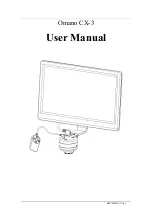
77
Combined Rule Setting Guide
You can set compound rule conditions to trigger actions when events occur in event action
settings.
1. Overview of Compound Rule Conditions
When setting up event action rules for each application, you can set conditions for triggering
actions. In addition to setting scheduling conditions, you can also set conditions based on
various system conditions to determine whether event actions should be triggered.
By utilizing the state of basic system resources such as alarm inputs or virtual alarm inputs, you
can automatically control rules. If there are other event action settings that have been
previously set up, you can also set conditions based on whether or not the event has occurred.
For example, if you want to turn on a warning light and broadcast a warning message to the
camera through an alarm output for a residential intrusion event, you can reduce false alarms
by setting the following conditions.
•
Schedule (20:00~07:00)
•
If even one person is detected outside the perimeter of the residential area within the
last 10 seconds before the residential intrusion event occurs
•
If alarm input signal 1 is being triggered
2. Combined Rule Conditions Setting
The following are the items that can be set as compound rule conditions
•
Rules set up in the application
•
Events specified by the application’s rules.
•
System I/O devices such as alarm inputs or virtual alarm inputs



































